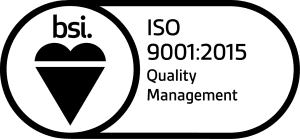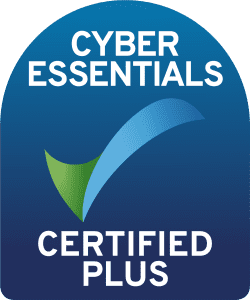Breaking Down TS 50701 and IEC 62443 for Rail Operators
In today’s rapidly evolving rail industry, cybersecurity and safety compliance are no longer optional-they’re essential. Rail operators face increasing pressure to safeguard critical infrastructure from cyber threats while maintaining operational safety and reliability.
At Digital Transit Limited, we recognize that navigating complex standards like TS 50701 and IEC 62443 can be daunting. This blog breaks down these crucial standards and explains why compliance matters-not just for regulators but for operators, passengers, and the entire rail ecosystem.
Share:
What Is CENELEC TS 50701?
CENELEC TS 50701 is a Technical Specification (TS) published by the European Committee for Electrotechnical Standardization (CENELEC) in 2021. It was designed specifically for railway applications, bringing cybersecurity requirements into line with other critical system standards like EN 50126 (RAMS lifecycle).
What It Covers:
Cybersecurity risk assessments
Security level assignments (SL1–SL4) for rail subsystems
Asset inventory and classification
Vulnerability and patch management
Supplier chain security expectations
Integration with existing RAMS processes (Safety + Availability)
Who Needs to Use It?
Railway Infrastructure Managers (e.g., Network Rail)
Rolling Stock Operators
System Integrators
Safety Assessors
Product Suppliers (OEMs)
How It’s Applied:
TS 50701 should be applied across the full lifecycle, from concept to decommissioning, mirroring the EN 50126 (RAMS) V-model. It expects you to define your cyber risk management early and adapt it at every development phase.
Example: When developing a new CBTC (Communications-Based Train Control) system, TS 50701 would require a cybersecurity risk assessment during requirements engineering, updated again during integration, and continually monitored during operation.
What Is IEC 62443?
IEC 62443 is a global cybersecurity standard developed by the ISA99 committee and adopted by the International Electrotechnical Commission (IEC). It’s not specific to rail but is universally applied across all industrial control systems, including manufacturing, utilities, and transport.
Key Parts of the Standard:
IEC 62443-2-1: Cybersecurity management system for asset owners
IEC 62443-3-3: System security requirements and security levels
IEC 62443-4-1 & 4-2: Secure development lifecycle for components and systems
How It’s Applied:
IEC 62443 introduces the concept of Security Levels (SL1-SL4) and expects you to perform Zone and Conduit Modelling-defining where sensitive assets exist and how data flows between them.
Each “zone” is protected based on its function, criticality, and exposure. The more critical a function (e.g., train control, signaling), the higher the level of security expected.
Example: In a rail network, an operator might place ticketing systems in SL1 and signalling control in SL3-then use IEC 62443 to design a firewall, access control, and logging strategy between them.
What Happens If You Don’t Comply?
Compliance is not just a best practice-it’s fast becoming a contractual and legal necessity.
1. Cyber Incidents and System Failures
Lack of structured risk assessment leaves vulnerabilities unpatched.
Deutsche Bahn (2017): Hit by the WannaCry ransomware affecting train signage systems.
Merseyrail (2021): Victim of a ransomware attack that leaked internal data.
These are real-world consequences of underestimating cyber threats.
2. Failure to Secure Investment or Public Funding
Many EU and APAC tenders now mandate compliance with TS 50701 or equivalent cybersecurity frameworks. Without it, suppliers and operators may lose eligibility for contracts.
3. Audit Failures & Insurance Gaps
Rail operators are now expected to demonstrate proactive cyber assurance. Compliance reports, test evidence, and alignment with standards are frequently reviewed by safety assessors and insurers.
4. Legal and Reputational Damage
New regulatory frameworks under the EU NIS2 Directive and local transport safety laws (e.g., Singapore’s Cybersecurity Code of Practice) can bring penalties and public scrutiny if operators are found negligent.
How Our Tools Enable Practical Compliance
At Digital Transit Limited, we’ve built two key platforms to support cybersecurity and software safety assurance:
✅ CyRail – Cybersecurity Assurance Platform
Designed to simplify and automate compliance with TS 50701, IEC 62443, and IEC 63452, CyRail enables:
Gap analysis dashboards with actionable mitigation steps
Automated document checking for compliance traceability
Lifecycle tracking (EN50126 Phases 1–12)
Evidence generation for auditors and regulators
Supplier/asset-level compliance views
⚙️ RAPORS – Software Risk Assessment Platform
Focused on EN 50716, EN 50128, and IEC 61508, RAPORS supports:
Automated risk analysis of software artifacts (requirements, tests, code)
Smart SIL-level traceability and gap highlighting
Integration with DOORS, Jira, Enterprise Architect
Efficient development of Software Safety Cases
Together, these platforms allow teams to build assurance into the development process-not bolt it on after the fact.
Looking Ahead: The Future of Cybersecurity Compliance in Rail
Over the next five years, we expect:
TS 50701 to evolve into a full standard (EN 50701)
IEC 62443 compliance to become a procurement prerequisite
Integration of cybersecurity and safety standards into a single framework
Automated assurance tools like CyRail to become industry standard for documentation, evidence, and monitoring
AI-powered risk assessment, like RAPORS, to accelerate SIL software development while maintaining rigorous traceability
Final Thoughts
Cybersecurity compliance is no longer an isolated function—it is a core part of rail safety, system engineering, and procurement. Understanding and applying standards like TS 50701 and IEC 62443 early ensures resilience, continuity, and trust.
At Digital Transit Limited, our mission is to make this process smarter, faster, and more transparent.
👉 Ready to simplify your compliance journey? Let’s talk.


